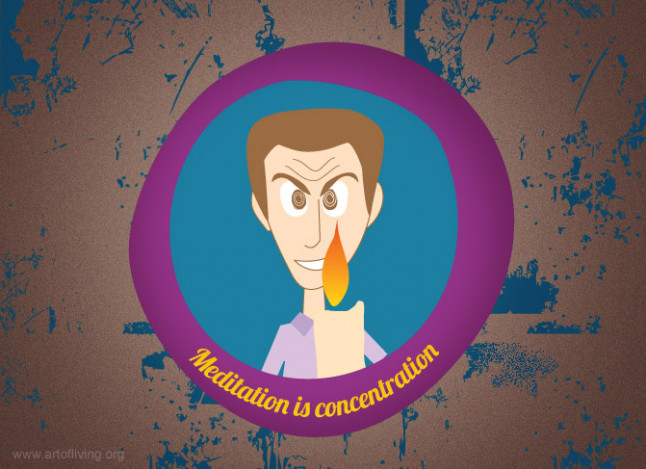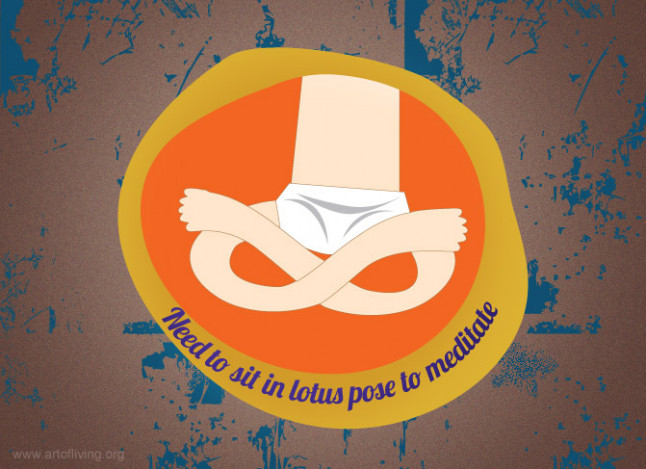
With close to six billion minds active from moment to moment, there are endless streams of thoughts on every aspect of creation.
While there are myths about many topics, one of the most popular one is meditation.
Here is a list of the most common myths, hoping that any confusion that you might have is cleared.

Myth #1 Meditation is concentration
Meditation is actually de-concentration. Concentration is a benefit of meditation. Concentration requires effort and meditation is absolute relaxation of the mind. Meditation is letting go, and when that happens, you are in a state of deep rest. When the mind is relaxed, we can concentrate better.

Myth #2 Meditation, a religious practice
Yoga and meditation are ancient practices that transcend all religions. For meditation, there is no bar on any religion. In fact, meditation has the ability to bring religions, nations and faiths together. Just like the sun shines for everyone, and the wind blows for everyone, meditation benefits everyone. “We encourage people from all backgrounds, religions and cultural traditions to come together and meditate in a spirit of celebration,” says Sri Sri Ravi Shankar.

Myth #3 Meditation is for old people
Meditation is universal and adds value to lives of people of all age groups. One can start mediating at the age of eight or nine. Just like a shower keeps the body clean, meditation is like the shower for the mind

Myth #4 Sit in the lotus posture to meditate
The Patanjali yoga sutras are perhaps one of the most scientific and detailed study that man has produced dealing with the nature of the mind. “Sthirasukhamasanam,’’ a yoga sutra by Patanjali explains that while meditating it is more important to be comfortable and steady. This helps us to have a deeper experience in meditation. You can sit cross-legged, on a chair, in a sofa – it is fine. Yet when you start your meditation it is good to maintain a posture where the spine is erect and head, neck and shoulders are relaxed.

Myth #5 Meditation is like hypnotizing yourself
Meditation is an antidote for hypnosis. In hypnotism, the person is not aware of what he or she is going through. Meditation is complete awareness of each and every moment. Hypnotism takes the person through the same impressions that are in his mind. Meditation frees us from these impressions so that our consciousness is fresh and clear. Hypnotism increase metabolic activity, meditation reduces it. “Those who practice pranayama and meditation regularly cannot be hypnotized easily,” says Gurudev Sri Sri Ravi Shankar.

Myth #6 Meditation is thought control
Thoughts do not come to us by invitation. We become aware of them only after they have arrived! Thoughts are like clouds in the sky. They come and go on their own. Trying to control thoughts involves effort and the key to a relaxed mind is effortlessness. In meditation, we do not crave for good thoughts nor are we averse to bad thoughts. We simply witness and eventually transcend thoughts and move into that deep inner silent space.






